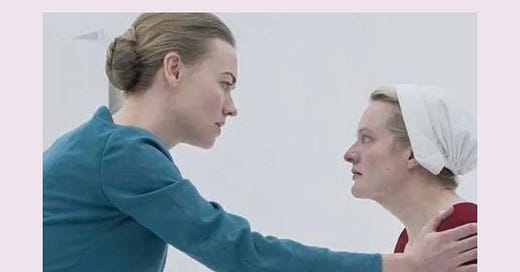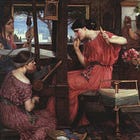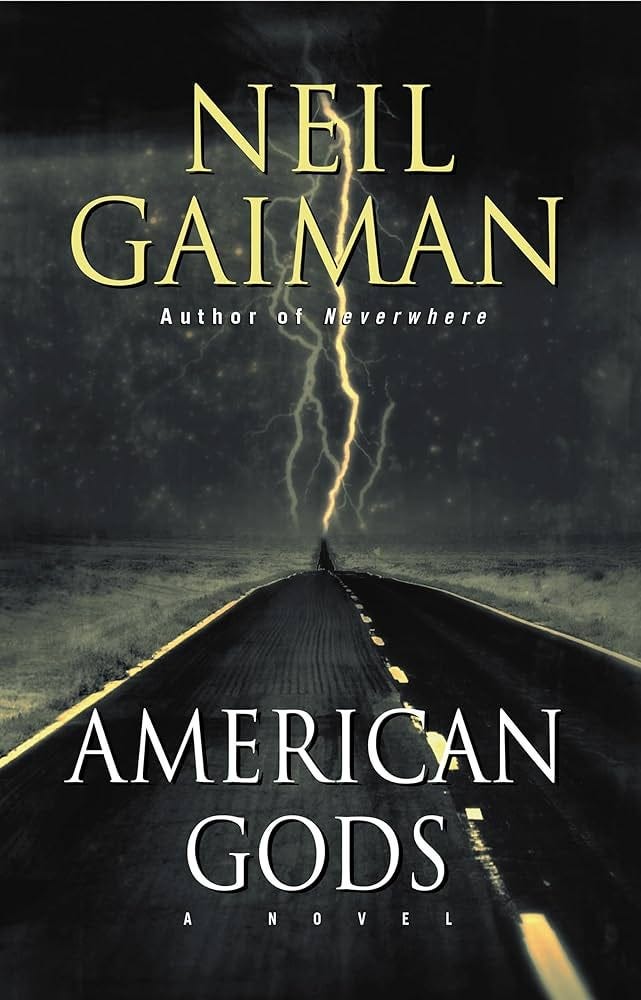The Handmaids and the Hanged Maids
Power and oppression in Margaret Atwood's novels, historical perspectives, and the multifarious nature of life itself
We recently discussed The Penelopiad by Margaret Atwood on our podcast. In this newsletter, we will be further dissecting the parallels between Margaret Atwood’s The Handmaid’s Tale and The Penelopiad, and the message she may be trying to send across to her audience.
You are reading The Novel Tea Newsletter, a companion to The Novel Tea podcast. Here, you’ll find book reviews, thematic literary analysis, and cultural commentary to help you thoughtfully engage with the world.
New posts come out every Tuesday. If you enjoy reading our work and want to show your appreciation for the time and effort we put into it, please consider subscribing and sharing our newsletter with others.
“Read Some History”
The Handmaid’s Tale is probably Margaret Atwood’s most acclaimed work. Though this book was published way back in 1985, the 300-page novel skyrocketed to fame in 2017 when Hulu released a TV adaptation of the novel. At face value, it seems pretty obvious that the themes of The Handmaid’s Tale include women’s oppression and discrimination and the book would be classified as a feminist novel. However, Margaret Atwood received criticism that made people ask the question “Well, if this book is meant to shed light on the lack of women’s rights in today’s society, then why put Serena Joy and Offred against each other? Shouldn’t they be on the same side?”
The question posed parallels to the conversation that Shruti and I had about The Penelopiad (listen to the full episode here). Penelope and Helen have a toxic and catty frenemy relationship, whereas her interactions with her maids are indifferent and transactional. Why is it that in both stories, the relationships among women are so poisonous and destructive? I got the answer from Margaret Atwood herself on the podcast Offline with Jon Favreau: Margaret Atwood on Good, Evil and Stupidity.
“In The Handmaid’s Tale, people said, ‘Why were women helping to control other women?’ Answer: Read some history.”
-Margaret Atwood, Offline with Jon Favreau
After listening to this podcast episode, I went down a rabbit hole of examples of women replicating this behavior in history. Rebecca Rideal gave me a reality check with her article Don’t forget all the historical women who held up oppression. In this article, she reminds us that history isn’t black and white or as simple as good vs. evil. Was Offred good, and Serena Joy evil? Was Penelope the hero, and Helen the villain? Rideal says “When we seek only those who inspire, when we shape historical lives into a “hero’s journey”, we miss the multifarious nature of life itself.”
What is The Handmaid’s Tale Really About?
In The Handmaid’s Tale, the hierarchy of power is a deceptive one because it alludes to the idea of men at the top and women at the bottom. Upon further analysis, I question this hierarchy. When the Handmaids undergo training before being sent to their chosen households to provide offspring, it is other women who torture, teach, and regulate the Handmaids into submission. When the Handmaids perform their “ceremonial acts” with their respective Commanders, it must be done in the presence of the wife to supervise and oversee the situation. Is the threat towards the Handmaids coming from male control or female control?
Margaret Atwood says this in an essay by The Guardian:
The Handmaid's Tale has often been called a "feminist dystopia", but that term is not strictly accurate. In a feminist dystopia pure and simple, all of the men would have greater rights than all of the women. It would be two-layered in structure: top layer men, bottom layer women. But Gilead is the usual kind of dictatorship: shaped like a pyramid, with the powerful of both sexes at the apex, the men generally outranking the women at the same level; then descending levels of power and status with men and women in each, all the way down to the bottom, where the unmarried men must serve in the ranks before being awarded an Econowife.
Similarly, in The Penelopiad, Penelope’s indifference toward her maids seems to be pretentious behavior based on classism, but is really rooted in Penelope’s insecurity about the lack of power and control she has in her own home. Once Telemachus enters her life, Eurycleia (the head maid, and Oddyseus’s former wet nurse) takes over motherly tasks which further alienates Penelope. Was Odysseus the villain for abusing his power to hang the twelve maids for seemingly no reason? Or was Penelope equally to blame for not using her position to speak for these maids in what she knew was a male-dominated society?
The biggest similarity between Penelope and Offred is the power shift that kickstarts their journey. Penelope enters her new kingdom with Odysseus by her side, and Offred enters the Commander’s household with a given task in mind; they start out clueless, naïve, and maybe a bit hopeful. Then a power shift happens when Penelope becomes the ruler of her kingdom after Odysseus takes leave to join the Trojan War, and when it is revealed that Offred is pregnant and able to finally provide Serena Joy and the Commander with a child.

The biggest difference between Penelope and Offred is how they use their power to get control of their narrative. Penelope lets Odysseus back into her life as if the last 20 years never happened, and does not use her newfound power to stand up for the maids or save them from their unfair end. Offred, on the other hand, becomes a whole new person, taking control of her life to fight for what she believes in. These differences make me wonder if vigor and power hold more strength than gender itself in these stories. Anyone can sit on a throne, man or woman — but what they do with their potential is what defines them.
“My fundamental position is that women are human beings, with the full range of saintly and demonic behavior this entails, including criminal ones,”
— Margaret Atwood
— Neha
Related Posts You May Have Missed
Next Up
Next on the podcast, we’ll be reading and discussing American Gods by Neil Gaiman. The episode will come out on March 20.








I hadn't considered this. When I read the Handmaid's Tale, I did not consider the society to be men vs women. I had read it as patriarchy vs equality. For me, that mirrored what I know to be true from real life. Women can enforce the patriarchy like men do and men can fight for equality. I look forward to rereading The Handmaid's Tale with this article in mind. Also, looking forward to reading the Penelopiad. Thank you for sparking my interest!